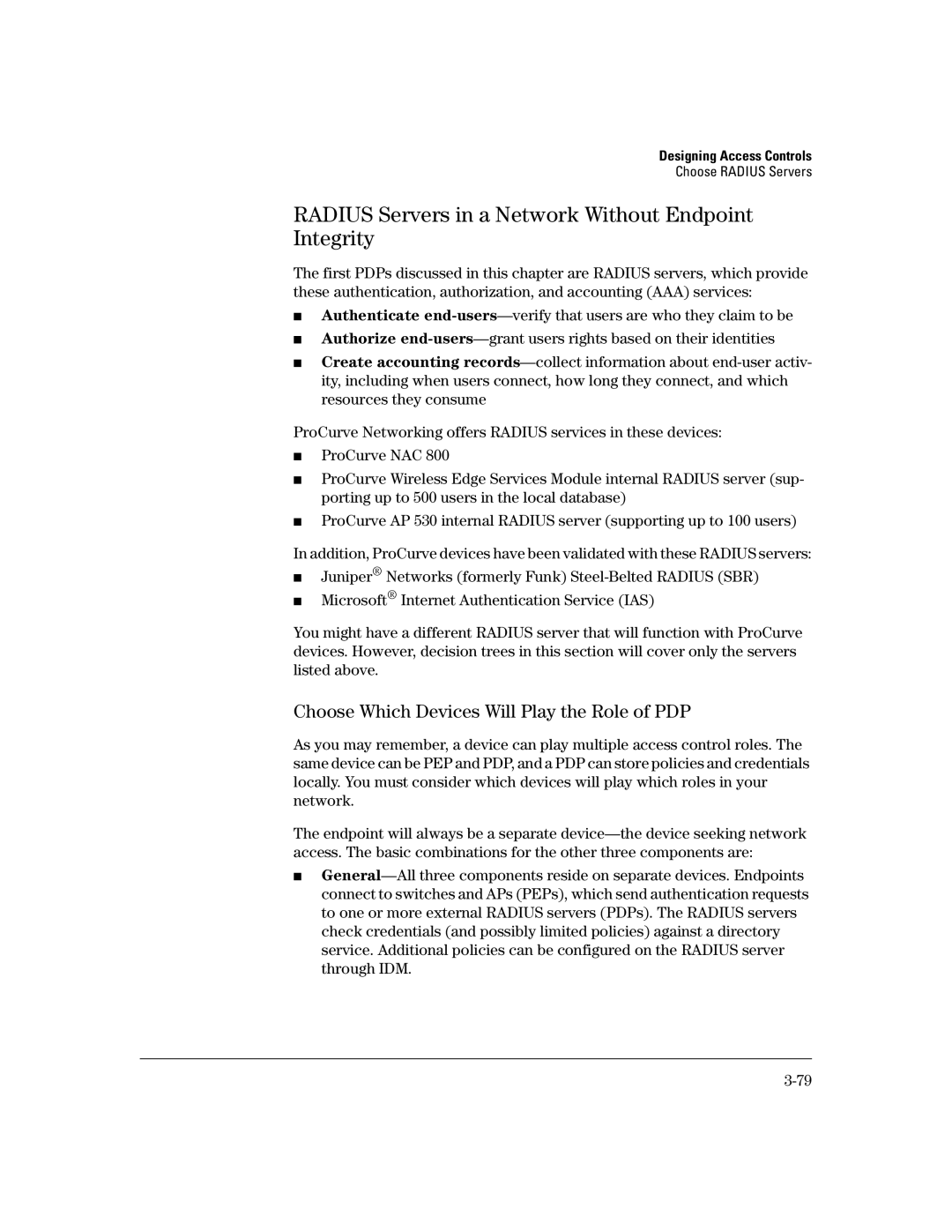Designing Access Controls
Choose RADIUS Servers
RADIUS Servers in a Network Without Endpoint Integrity
The first PDPs discussed in this chapter are RADIUS servers, which provide these authentication, authorization, and accounting (AAA) services:
■Authenticate
■Authorize
■Create accounting
ProCurve Networking offers RADIUS services in these devices:
■ProCurve NAC 800
■ProCurve Wireless Edge Services Module internal RADIUS server (sup- porting up to 500 users in the local database)
■ProCurve AP 530 internal RADIUS server (supporting up to 100 users)
In addition, ProCurve devices have been validated with these RADIUS servers:
■Juniper® Networks (formerly Funk)
■Microsoft® Internet Authentication Service (IAS)
You might have a different RADIUS server that will function with ProCurve devices. However, decision trees in this section will cover only the servers listed above.
Choose Which Devices Will Play the Role of PDP
As you may remember, a device can play multiple access control roles. The same device can be PEP and PDP, and a PDP can store policies and credentials locally. You must consider which devices will play which roles in your network.
The endpoint will always be a separate
■
